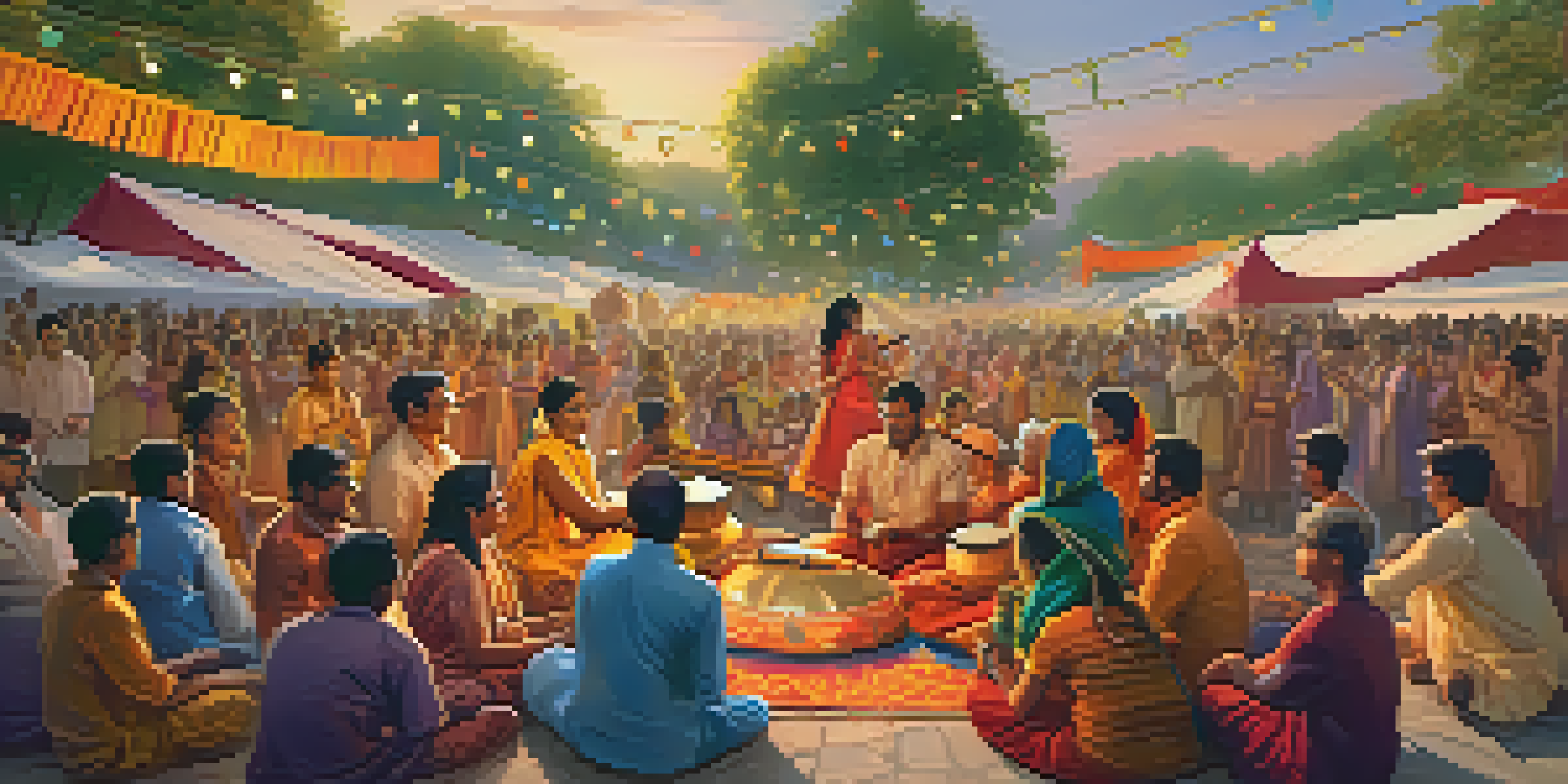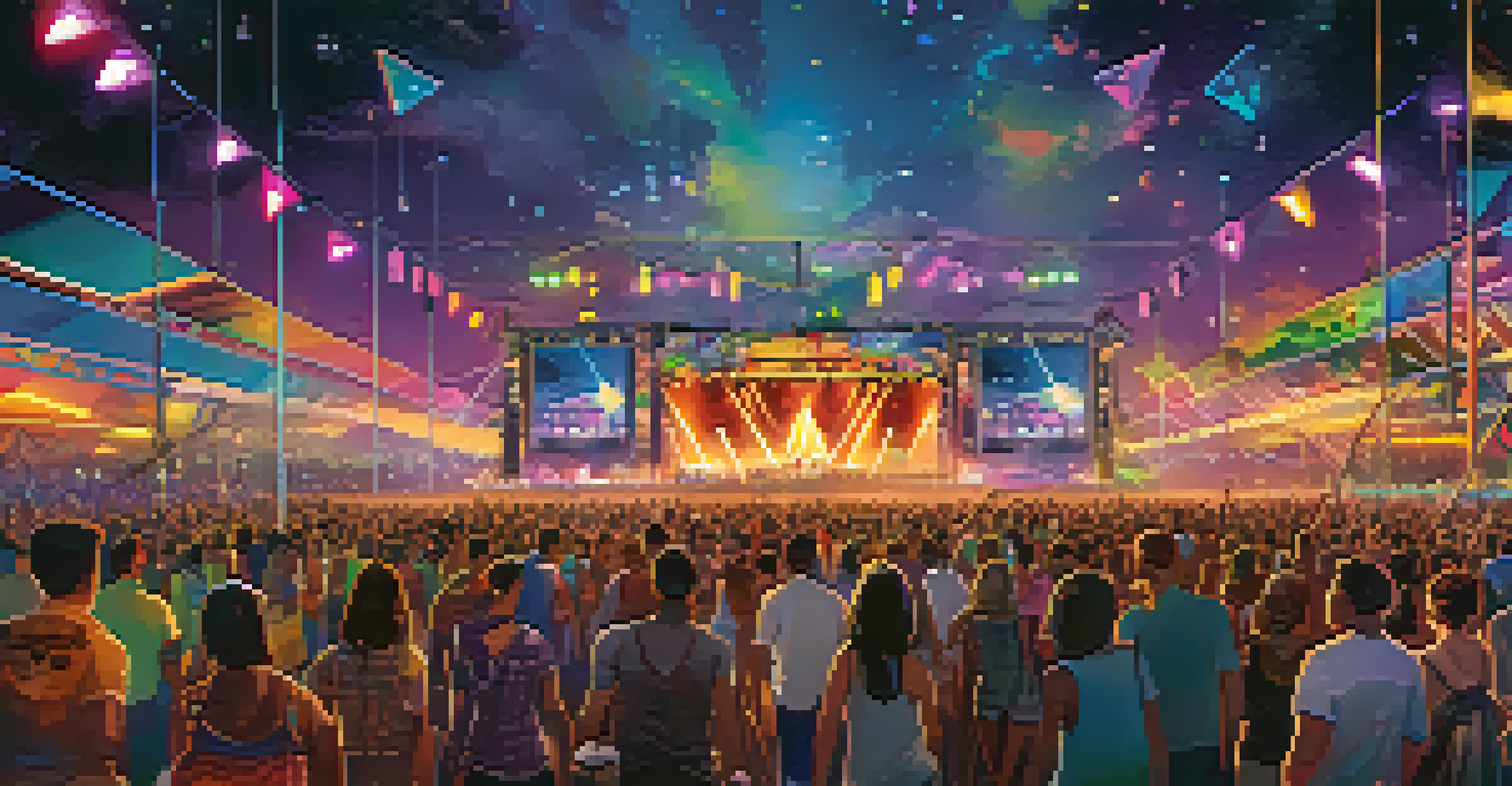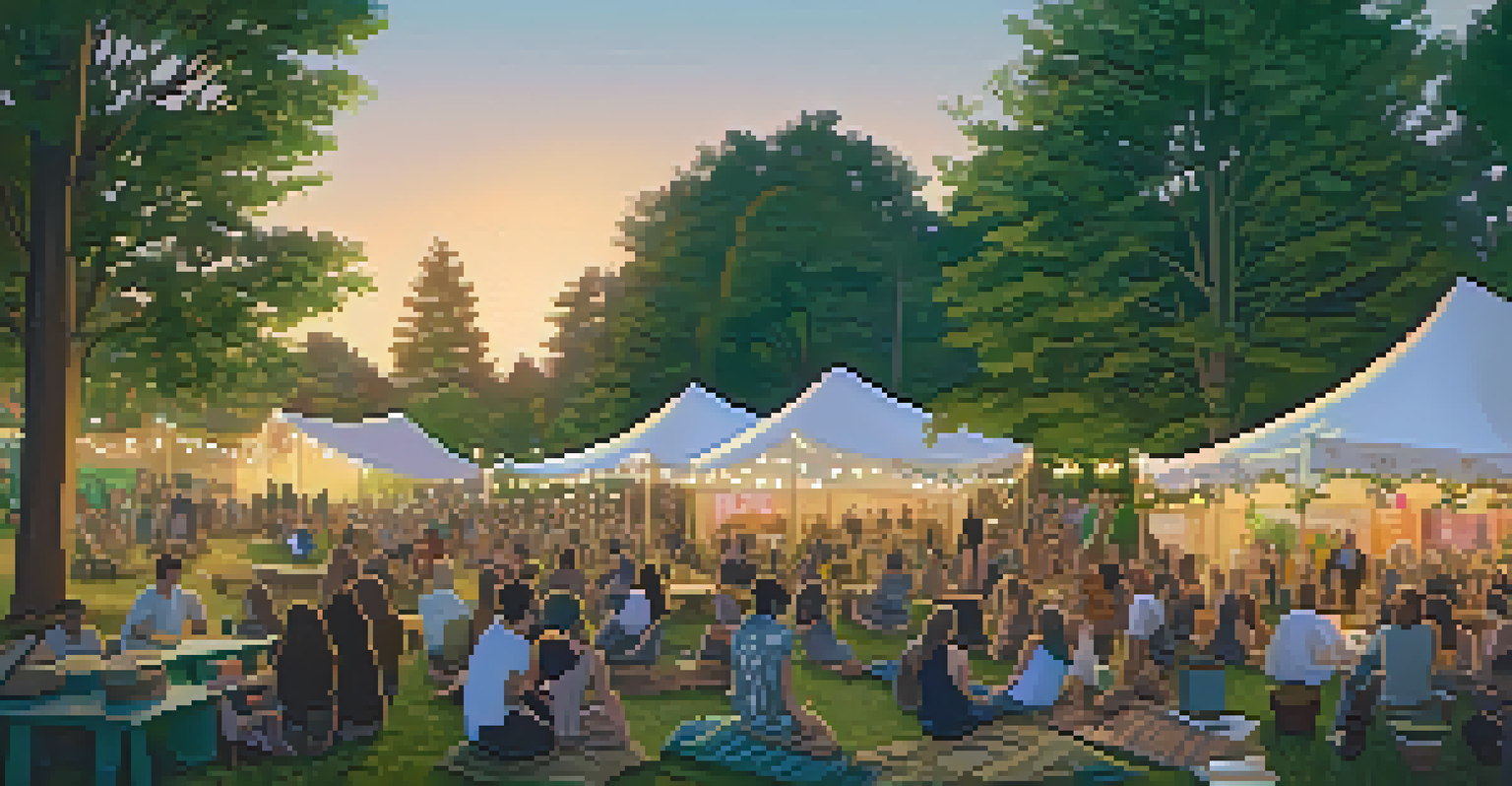The Evolution of Music Festivals in India Over the Decades

The Early Days: Traditional Festivals and Cultural Roots
In India, music festivals have deep cultural roots, often linked to religious and seasonal celebrations. Traditionally, these gatherings showcased classical music, dance, and folk performances, serving as a platform for local talent. Festivals like the Sawai Gandharva Bhimsen Festival in Pune highlighted the artistry of Indian classical music, creating a rich tapestry of sound and culture.
Music is the shorthand of emotion.
These early festivals were not just about music; they were community events that fostered social bonds among attendees. Families would gather to enjoy performances, share meals, and celebrate together, reinforcing cultural ties and traditions. As a result, music became a unifying force, deeply embedded in the fabric of Indian society.
However, these festivals were often limited to specific genres and localized audiences, lacking the diversity seen in contemporary events. As society evolved, so did the demand for a broader musical experience, paving the way for the transformation of music festivals in India.
The 1990s: The Birth of Modern Music Festivals
The 1990s marked a significant shift in the music festival landscape in India, as globalization began to influence local music scenes. The introduction of Western music genres and international artists led to the rise of new festival formats. Events like the Sunburn Festival, which started in 2007, became emblematic of this change, embracing electronic dance music (EDM) and attracting a younger audience.

These modern festivals brought a fresh energy, combining local and global influences, and often featuring a mix of genres. The vibrant atmosphere, complete with art installations and food stalls, transformed the festival experience into a multi-sensory celebration. This eclectic blend drew in diverse crowds, eager to explore new sounds and cultures.
Festivals Rooted in Tradition
Indian music festivals have evolved from traditional cultural gatherings to diverse events that celebrate various musical genres and social connections.
Moreover, the 1990s saw the rise of corporate sponsorships, which provided the necessary funding and infrastructure for these festivals to flourish. This shift not only enhanced the quality of production but also allowed for larger venues and bigger lineups, further cementing the popularity of music festivals in India.
The 2000s: Diversification and Niche Festivals
As the 2000s unfolded, the Indian music festival scene became increasingly diversified. A plethora of niche festivals emerged, each catering to specific genres and audiences. For instance, the NH7 Weekender focused on indie music, creating a platform for emerging artists and fostering a sense of community among fans of alternative sounds.
The role of music is to enable one to express oneself in a way that is more profound than words.
This diversification allowed music lovers to explore various genres, from rock and metal to folk and classical, at dedicated events. The rise of these niche festivals not only showcased local talent but also attracted international acts, enhancing the cultural exchange within the Indian music landscape. It was a celebration of diversity, with each festival offering a unique experience.
Furthermore, these festivals began to incorporate elements beyond music, such as art, food, and workshops, enriching the overall experience for attendees. This holistic approach transformed music festivals into cultural gatherings, where people could connect over shared interests and celebrate creativity in all its forms.
The 2010s: Global Recognition and Bigger Audiences
The 2010s marked a period of global recognition for Indian music festivals, as international artists and promoters took notice of the vibrant scene. Major events like the We The People Festival and Magnetic Fields attracted international attention, showcasing India's ability to host world-class music festivals. This influx of global talent not only elevated the local music scene but also solidified India's place on the global festival map.
As festivals grew in scale, so did their audiences, with thousands flocking to popular events each year. The festival experience became synonymous with travel and adventure, as people sought not just music but a chance to explore new cultures and landscapes. This trend led to an increase in tourism, directly benefiting local economies and communities.
Modern Festivals Embrace Diversity
The rise of niche festivals in the 2000s has allowed for a broader exploration of genres, while incorporating art and community engagement.
Moreover, the rise of social media played a crucial role in this growth, allowing festivals to reach wider audiences and engage with fans in real-time. Attendees began to share their experiences online, creating a buzz that further fueled interest in these events and helped establish a loyal fan base.
The Impact of Technology on Music Festivals
Technology has profoundly transformed the music festival experience, from ticketing to live streaming. The advent of mobile apps allowed for seamless navigation, schedule updates, and social interaction among attendees. This integration of technology enhanced the overall experience, making it easier for festival-goers to enjoy every aspect of the event.
In addition, live streaming has opened up new avenues for festivals, allowing those who cannot attend in person to experience the magic from afar. Platforms like YouTube and Facebook have enabled festivals to reach global audiences, showcasing performances and behind-the-scenes content. This shift has democratized access to music, allowing fans worldwide to engage with their favorite artists.
Moreover, innovative sound and lighting technologies have transformed the way music is experienced. High-quality sound systems and immersive visual displays create an unforgettable atmosphere, elevating the emotional connection between artists and audiences. This technological evolution continues to shape the future of music festivals in India.
The Role of Social Issues and Activism in Festivals
In recent years, music festivals in India have increasingly become platforms for social issues and activism. Organizers are using their events to raise awareness about pressing topics such as climate change, gender equality, and mental health. This shift not only reflects the values of younger audiences but also encourages festival-goers to engage with these issues on a deeper level.
Festivals are now incorporating workshops, talks, and art installations that promote social causes, creating an environment that fosters dialogue and awareness. For example, initiatives like 'The Great Indian Music Festival' have focused on sustainability, showcasing eco-friendly practices and encouraging attendees to be mindful of their environmental impact.
Social Issues Shape Festival Culture
Recent music festivals in India are increasingly addressing social issues, using their platforms to promote awareness and activism among attendees.
This integration of social activism into music festivals enriches the overall experience, turning them into spaces of learning and growth. By addressing important issues through the lens of music and art, festivals are not just entertainment; they become catalysts for change in society.
The Future of Music Festivals in India
Looking ahead, the future of music festivals in India appears bright, with continued growth and evolution on the horizon. As more artists and genres emerge, festivals are likely to become even more diverse, catering to a wider range of musical tastes. This evolution will further enrich the cultural landscape, allowing for innovative collaborations and unique experiences.
Additionally, the integration of technology will continue to shape how festivals are organized and experienced. With advancements in virtual reality and augmented reality, festival-goers may soon have access to immersive experiences that blend the physical and digital worlds. This could redefine what it means to attend a music festival, creating new opportunities for engagement and interaction.

Ultimately, as music festivals in India evolve, they will reflect the dynamic nature of society itself, continually adapting to the changing tastes and values of audiences. Whether through music, art, or social activism, these events will remain a vital part of India's cultural expression, bringing people together in celebration of creativity and community.